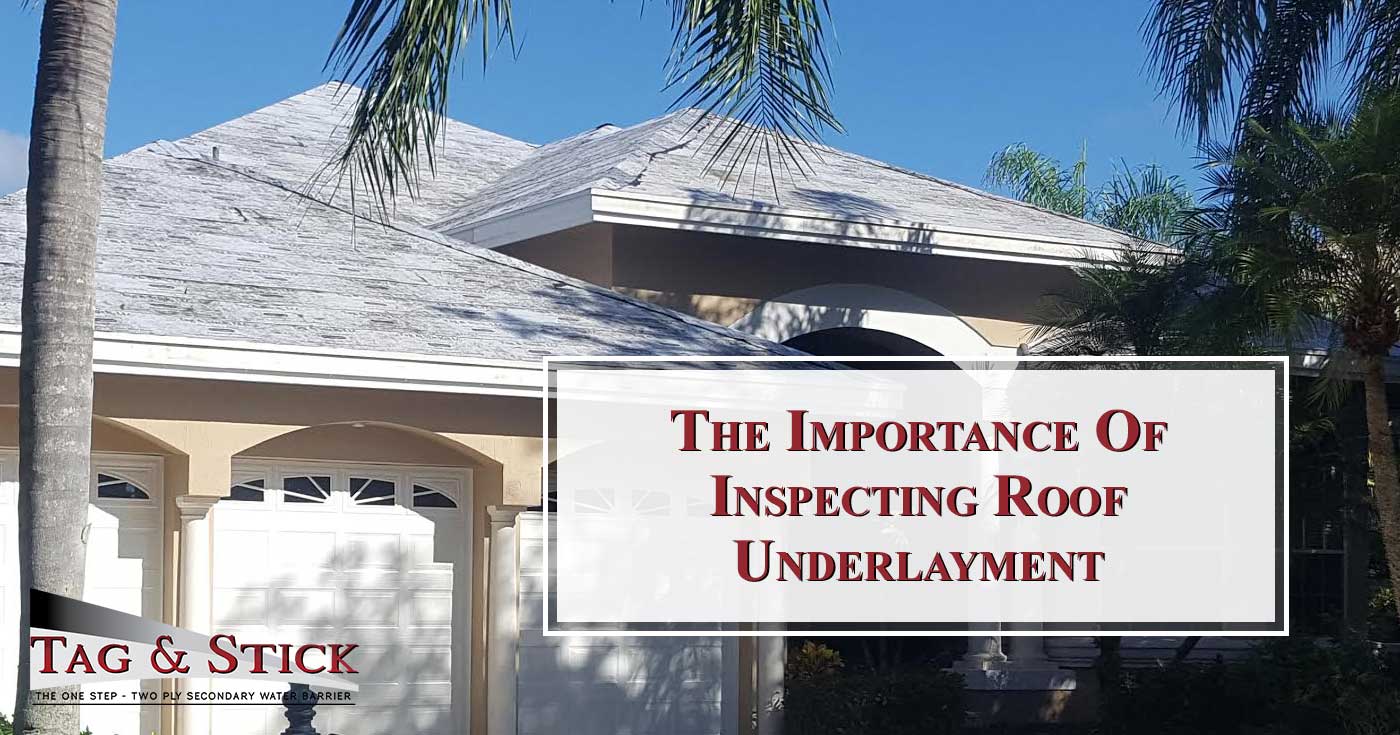The Importance Of Inspecting Roof Underlayment

For most people, purchasing a home is the single biggest investment they’ll ever make. Hours are spent researching the best location, type of house, and climate that we want to live in. Once you’ve settled on a mortgage, you ultimately become part of a whole new club. Welcome to being a homeowner.
Whether it’s the first home or one of many, maintenance remains a key aspect of successful home-ownership. Without it, living can be uncomfortable or unsafe and the resale value of the property declines.
Most homeowners are familiar with the three key aspects of home maintenance; structure, safety, and deferred maintenance. In this article, we’ll take a closer look at the structural category, particularly concerning the roof underlayment of a home.
The Anatomy Of A Roof
A roof consists of three main parts; the support structure, the sheathing and underlayment, and the roofing material used.
Roofing material has undergone the most expansion recently, everything from classic roof tiles to copper and even grass-covered roofs are available.
Most external roof materials are water-resistant, not waterproof. Whether the roof is tiled, shingled, or metal these materials all prevent water to some extent, but not entirely. That is why an underlayment is necessary. It serves to create a moisture barrier between the roofing material and support structure. This is critical to protect the support structure and sheathing from decay, not to mention the inside of the home from mold, dampness, and leaks. Most support structures are made out of wood that is lightly treated, so if it gets damp, it will very rapidly rot and weaken the integrity of the support resulting in a roof collapse.
Due to the location of the underlayment, physical inspection is difficult and best left to a roofing expert. Damaged roof underlayment will usually be visible as damp spots on walls and ceilings, but it may manifest in misleading ways that point to failed roofing material or clogged gutters instead. If the home has an attic, a rudimentary inspection of the support structure can usually be done from there. Any signs of regular moisture point to faults in roofing material or underlayment.
Throughout the life of a structure, the roof will most likely need to be replaced every 20 to 30 years depending on the materials used and the quality of the installation. Choosing the right product especially in a challenging climate like Florida, replacing roof underlayments can determine the longevity of your new roof.
If you are building a new home or replacing your existing roof, Here are just a few of the key reasons to consider Tag & Stick self-adhered underlayments:
- Tag & Stick is compatible with a wide range of roofing material – so if your partner is dead-set on that neo-modern copper roofing look, concrete tile, slate, clay, metal or shingles… you can still be insured of a solid U.S. made underlayment.
- Tag & Stick is the only self-adhered system installed over a base sheet that meets the wind uplift requirements in the (High-Velocity Hurricane Zones(HVHZ)
- Tag & Stick gives you 2 laminated plies giving you 115mils of a modified asphalt-soaked fiberglass mat,
- IF….the roof ever does need to be replaced, Tag & Stick can be removed without de-laminating the existing roof deck.